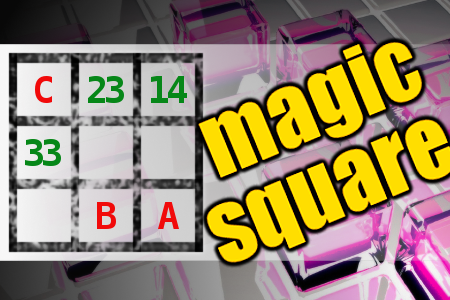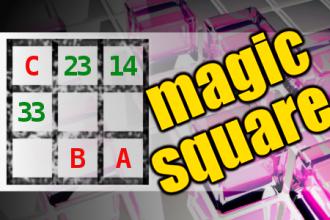MAGIC SQUARE: Calculate A-B*C
The aim is to place the some numbers from the list (3, 4, 14, 22, 23, 33, 60, 61, 62, 71) into the empty squares and squares marked with A, B an C. Sum of each row and column should be equal. All the numbers of the magic square must be different. Find values for A, B, and C. Solution is A-B*C.
An Almost Affair
A married man goes into a confessional and says to his priest
"I had an affair with a woman... almost."
The priest says, "What do you mean, almost?"
The man says, "Well, we got undressed and rubbed together, but then I stopped."
The priest says, "Rubbing together is the same as putting it in. You're not to see that woman again. For your penance, say 5 Hail Marys and put $50 in the poor box."
The man leaves the confessional, says his prayers, then walks over to the poor box.
He pauses for a moment and then starts to leave.
The priest, who was watching, quickly runs over to him saying, "I saw that, you didn't put any money in the poor box!"
The man replies, "Yeah, but I rubbed the $50 on the box, and apparently that's the same as putting it in."
Joke first seen Posted by Jem on thinkhumanism.com foruum, on July the 22nd, 2007,
Image by Peter H from Pixabay

